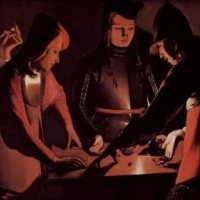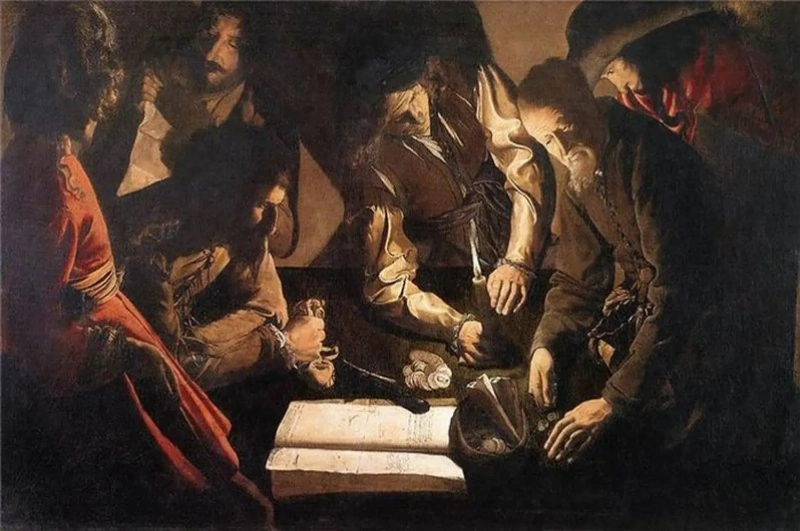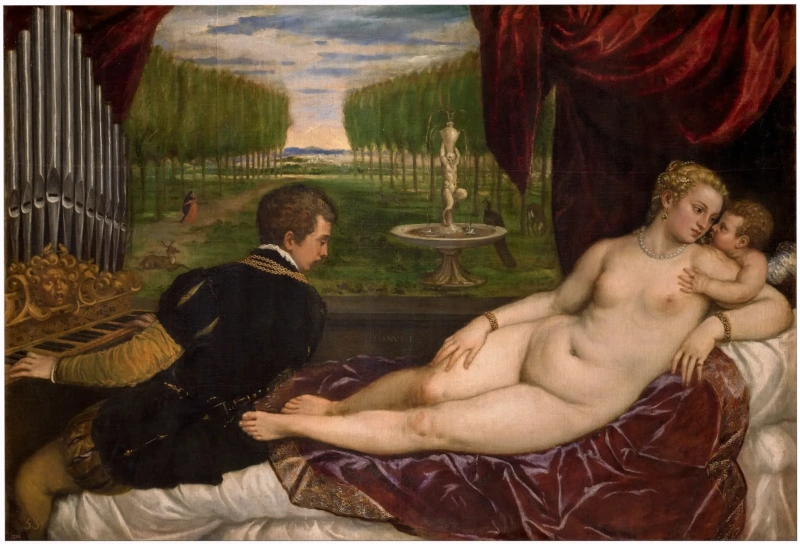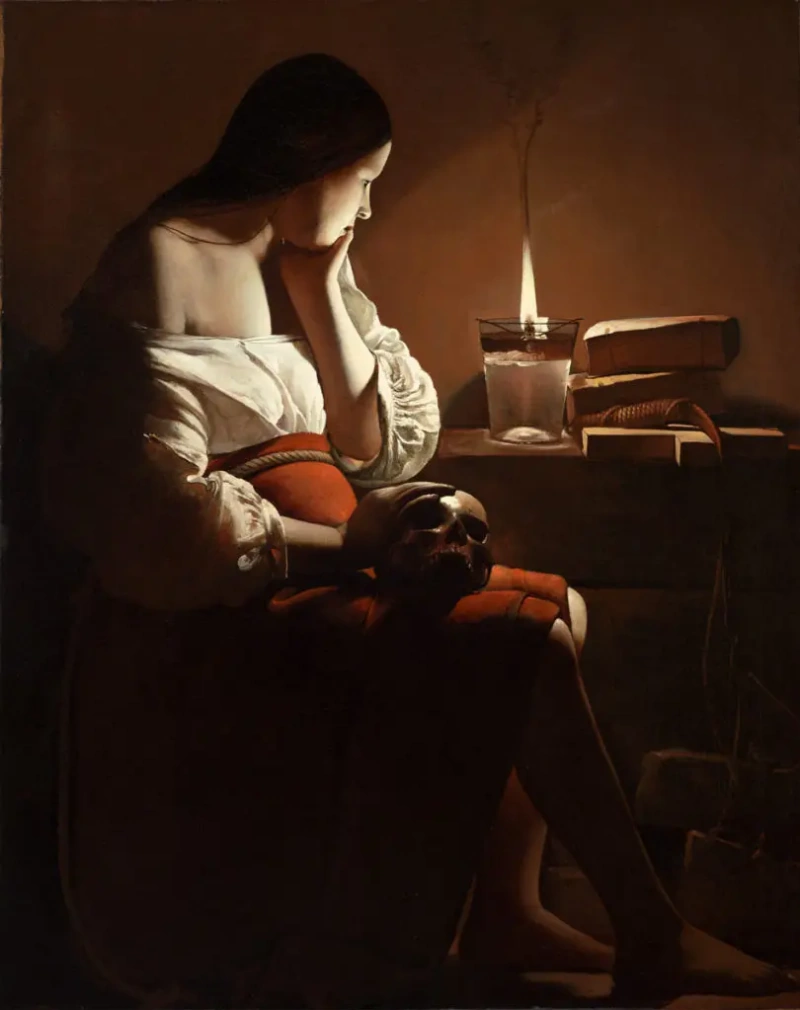log in
Enter site
Login to use Arthive functionality to the maximum
Georges de Latour (or Georges de La Tour,Georges de La Tour) – great artist of the era Baroquefrom Lorraine re-opened in the twentieth century. Won recognition during his lifetime, in the next XVIII century, Latour was completely forgotten and erased from history. In the NINETEENTH of his individual paintings are scattered in museums of different countries, will cause surprise and delight, but not the Association with the name Latour. His work has been attributed to the Rembrandtthen Velasquezthen Murillothen The Gerrit van Honthorstuntil 1915, the year the German art historian Hermann Voss for the first time linked the name Latour, known to historians in documents, with some famous paintings.
The clarification of the circumstances of the biography Latour was like an archaeological dig.
There is no memoir, no diary of the artist. Only avaricious lines of official documents. Only what can objectively inform the surviving city archives: Latour married, Latour baptized children, foreign or native, Latour entered the service of the Dukes of Lorraine, Latour pleaded or were convicted. However, experts still hope to someday find something more informative.
We do not know even what looked like artist: found no portraits, no avtoportreta. Latour refuses to "leave the darkness", leaving us to meditate on his gloomy (and now insanely expensive!) paintings.
Georges de Latour was born in 1593 in Vic-sur-Seille is a small town of Lorraine. The future artist was the second oldest of seven children of Jacques de Latour. Many children – many entries in the town records. Somehow, father Latour arises in them as the Baker, the butcher, then as a Miller and even a stonemason. He changed his pursuits or the records contained errors – one thing is clear: George was formed in the burgher craft environment. By birth he was a tradesman – ie an ordinary citizen, not marked by wealth or nobility. However, it was at Latour still ahead.
The next documented mention of an artist immediately brings us more than 20 years, in 1617. The whole period of childhood and youth, information about where and what Latour could learn from and who were his teachers, whether he had the opportunity to travel or lived almost entirely in Vic – all of these essential for the formation of any artist milestones while covering the darkness of the unknown.
And all the same record 1617 provide the opportunity for a series of hypotheses about the biography of Latour. What is so recorded parish registers in 1617, the year? Here's what: Latour married! His fiancee Diana Lenart from the nearby town of Luneville was significantly higher Latour's social position: her father was Secretary of the Duke of Lorraine, and my sister's husband – the Governor of the judicial district which included his hometown Latur. In short, the status of this family was that the marriage of Diana and son of a Baker, is an obvious mismatch. The bride's parents even refused to attend the wedding. Dowry Diana got "500 francs, 2 cows, heifer and furniture"and Latour - a title of nobility.
The choice of Diana pushing the idea that by 1617 Latour has made certain progress in painting, became known as the artist, otherwise such a marriage is unlikely to take place. But what of the artist's paintings were already written by this point, is not known. None of the paintings of Latour still does not have an exact date.
The first two or three years the couple, according to the custom of the time, lived in his parents ' home Latour. And during this time, Latour buried my father, and baptized his first child Philip, and his uspremniku (godparents) were nobles.
1620, the year the document is dated, became in time a real sensation, the only extant letter Latour. The message was addressed to the Duke of Lorraine to Henry II. In it, Latour notifies you that it is a simple painter from Vic, married a noble girl from Luneville, and "Smarandache requested his Majesty" to take Latour to the service, as in all the County, except him, no artists and restorers by profession.
Of course, Latour's letter, the experts considered almost under the microscope again the only written evidence of genius. It is written in calligraphic handwriting and with full respect for the rules of spelling, which undoubtedly tells on the education of the artist.
In the same letter, Latour offers us being prudent and practical. Referring to the nobility of his art, he dares to ask the Duke for exemption from taxes and other duties, and ruler of Lorraine petition Latour accepts graciously. The young family moved to Luneville, and even buys a house with a spacious room for workshop. Henry II had intended to build in Luneville another residence, and even thought to move the capital of the Duchy. For Latour, this meant the emergence of a vast field of activity for design of a new Palace.
Apparently, this is the best time in the fate of Latour. His work is in demand. His family is growing: almost every year Latyrov addition. Famous painting "Newborn"shakes the extraordinary accuracy with which is written the child. There's no blissful picturesque idealization of the baby, and often talk about realistic revolution Latour. But the simplest explanation is, perhaps, the most correct: Latour was the father of ten children. He should know looks like a human child immediately after birth?
Latour opens his workshop, and from all parts of Lorraine rush there to aspiring artists hoping to learn from his experience. The flow was so great that Latour limited the acceptance, assigning the tuition exorbitant 500 francs (recall that exactly the same once was a noble dowry of his wife).
The end of the 1620s – 1630-ies is a difficult time for Lorraine, entered the era of religious wars and torn apart between France and Spain. For Latour all too easy: Henry II dies in 1624, and his heirs art Latura a little interested. Losing noble patrons, the artist is forced to seek customers among the burghers. Meanwhile Lorraine was plagued by famine and epidemics, and the people of Luneville from the beginning dislike the upstart Latour, scribbling denunciations on him. It is known that in the list on the expropriation of the stocks of wheat in times of famine the name of the artist was the first – Latour could not forgive that he is tax-exempt, rich, and holds proudly and independently.
In 1631 Luneville erupts plague, which killed a third of citizens. Apparently, to this period belong the paintings of La tour depicting Saint Sebastian. In Lorraine has developed a real cult of the Saint, as he was considered the patron Saint of plague. In 1633-m still recovering after the plague entered the city government troops of Louis XIII. It is known that Latour reacted favorably to the invaders, was friends with the king's officers, and this is not surprising: native language Latour was French.
In 1638 Luneville made a desperate attempt to defend the sovereignty and to expel the French. The events were bloody. Retreating government troops burn the city. He burned almost to the ground. In this great fire burned the house and all the property of Latour. It is believed that this is why we have heard so few of his paintings (according to various estimates, from 40 to 50, and not more than 10 of them have the author's signature) and almost no personal documents.
Apparently, Latour fled, first in Nancy and then in the French capital. Traces Latour suddenly show up in Paris. There in the Royal Ledger recorded that, as a court painter, it is assigned a salary of 100 livres. Recent sensational documents confirm that customers Latour was cardinal Richelieu, as well as court architect and Minister of Finance.
In the early 1640s Latour returned to Luneville. The researchers found out about it surviving thanks to the numerous slander of city residents in Latour and litigation between them. The artist still refused to pay the city taxes, has pushed tax collector and even threatened to shoot him. In one of the denunciations Latour called the "unbearable" because it holds a pack of dogs, vtaptyvaetsya crops, in the following it is reported that Latour again, someone was beaten, and generally kept "like he was Senor this place". Urban aristokratia of Luneville was unable to forgive the Latour of its origin. And he, apparently, tried hard to defend their dignity.
In mid-January, 1652 died of tuberculosis Diana Latour. Two weeks later, on 30 January, the same disease her husband died. Only three out of ten children Latyrov were able to survive their parents. Their son étienne de Latour has inherited the title of "Royal painter", but to distinguish who owns the painting, simply signed "de Latour", yet – in the future.
Author: Anna Yesterday
Read more
The clarification of the circumstances of the biography Latour was like an archaeological dig.
There is no memoir, no diary of the artist. Only avaricious lines of official documents. Only what can objectively inform the surviving city archives: Latour married, Latour baptized children, foreign or native, Latour entered the service of the Dukes of Lorraine, Latour pleaded or were convicted. However, experts still hope to someday find something more informative.
We do not know even what looked like artist: found no portraits, no avtoportreta. Latour refuses to "leave the darkness", leaving us to meditate on his gloomy (and now insanely expensive!) paintings.
Georges de Latour was born in 1593 in Vic-sur-Seille is a small town of Lorraine. The future artist was the second oldest of seven children of Jacques de Latour. Many children – many entries in the town records. Somehow, father Latour arises in them as the Baker, the butcher, then as a Miller and even a stonemason. He changed his pursuits or the records contained errors – one thing is clear: George was formed in the burgher craft environment. By birth he was a tradesman – ie an ordinary citizen, not marked by wealth or nobility. However, it was at Latour still ahead.
The next documented mention of an artist immediately brings us more than 20 years, in 1617. The whole period of childhood and youth, information about where and what Latour could learn from and who were his teachers, whether he had the opportunity to travel or lived almost entirely in Vic – all of these essential for the formation of any artist milestones while covering the darkness of the unknown.
And all the same record 1617 provide the opportunity for a series of hypotheses about the biography of Latour. What is so recorded parish registers in 1617, the year? Here's what: Latour married! His fiancee Diana Lenart from the nearby town of Luneville was significantly higher Latour's social position: her father was Secretary of the Duke of Lorraine, and my sister's husband – the Governor of the judicial district which included his hometown Latur. In short, the status of this family was that the marriage of Diana and son of a Baker, is an obvious mismatch. The bride's parents even refused to attend the wedding. Dowry Diana got "500 francs, 2 cows, heifer and furniture"and Latour - a title of nobility.
The choice of Diana pushing the idea that by 1617 Latour has made certain progress in painting, became known as the artist, otherwise such a marriage is unlikely to take place. But what of the artist's paintings were already written by this point, is not known. None of the paintings of Latour still does not have an exact date.
The first two or three years the couple, according to the custom of the time, lived in his parents ' home Latour. And during this time, Latour buried my father, and baptized his first child Philip, and his uspremniku (godparents) were nobles.
1620, the year the document is dated, became in time a real sensation, the only extant letter Latour. The message was addressed to the Duke of Lorraine to Henry II. In it, Latour notifies you that it is a simple painter from Vic, married a noble girl from Luneville, and "Smarandache requested his Majesty" to take Latour to the service, as in all the County, except him, no artists and restorers by profession.
Of course, Latour's letter, the experts considered almost under the microscope again the only written evidence of genius. It is written in calligraphic handwriting and with full respect for the rules of spelling, which undoubtedly tells on the education of the artist.
In the same letter, Latour offers us being prudent and practical. Referring to the nobility of his art, he dares to ask the Duke for exemption from taxes and other duties, and ruler of Lorraine petition Latour accepts graciously. The young family moved to Luneville, and even buys a house with a spacious room for workshop. Henry II had intended to build in Luneville another residence, and even thought to move the capital of the Duchy. For Latour, this meant the emergence of a vast field of activity for design of a new Palace.
Apparently, this is the best time in the fate of Latour. His work is in demand. His family is growing: almost every year Latyrov addition. Famous painting "Newborn"shakes the extraordinary accuracy with which is written the child. There's no blissful picturesque idealization of the baby, and often talk about realistic revolution Latour. But the simplest explanation is, perhaps, the most correct: Latour was the father of ten children. He should know looks like a human child immediately after birth?
Latour opens his workshop, and from all parts of Lorraine rush there to aspiring artists hoping to learn from his experience. The flow was so great that Latour limited the acceptance, assigning the tuition exorbitant 500 francs (recall that exactly the same once was a noble dowry of his wife).
The end of the 1620s – 1630-ies is a difficult time for Lorraine, entered the era of religious wars and torn apart between France and Spain. For Latour all too easy: Henry II dies in 1624, and his heirs art Latura a little interested. Losing noble patrons, the artist is forced to seek customers among the burghers. Meanwhile Lorraine was plagued by famine and epidemics, and the people of Luneville from the beginning dislike the upstart Latour, scribbling denunciations on him. It is known that in the list on the expropriation of the stocks of wheat in times of famine the name of the artist was the first – Latour could not forgive that he is tax-exempt, rich, and holds proudly and independently.
In 1631 Luneville erupts plague, which killed a third of citizens. Apparently, to this period belong the paintings of La tour depicting Saint Sebastian. In Lorraine has developed a real cult of the Saint, as he was considered the patron Saint of plague. In 1633-m still recovering after the plague entered the city government troops of Louis XIII. It is known that Latour reacted favorably to the invaders, was friends with the king's officers, and this is not surprising: native language Latour was French.
In 1638 Luneville made a desperate attempt to defend the sovereignty and to expel the French. The events were bloody. Retreating government troops burn the city. He burned almost to the ground. In this great fire burned the house and all the property of Latour. It is believed that this is why we have heard so few of his paintings (according to various estimates, from 40 to 50, and not more than 10 of them have the author's signature) and almost no personal documents.
Apparently, Latour fled, first in Nancy and then in the French capital. Traces Latour suddenly show up in Paris. There in the Royal Ledger recorded that, as a court painter, it is assigned a salary of 100 livres. Recent sensational documents confirm that customers Latour was cardinal Richelieu, as well as court architect and Minister of Finance.
In the early 1640s Latour returned to Luneville. The researchers found out about it surviving thanks to the numerous slander of city residents in Latour and litigation between them. The artist still refused to pay the city taxes, has pushed tax collector and even threatened to shoot him. In one of the denunciations Latour called the "unbearable" because it holds a pack of dogs, vtaptyvaetsya crops, in the following it is reported that Latour again, someone was beaten, and generally kept "like he was Senor this place". Urban aristokratia of Luneville was unable to forgive the Latour of its origin. And he, apparently, tried hard to defend their dignity.
In mid-January, 1652 died of tuberculosis Diana Latour. Two weeks later, on 30 January, the same disease her husband died. Only three out of ten children Latyrov were able to survive their parents. Their son étienne de Latour has inherited the title of "Royal painter", but to distinguish who owns the painting, simply signed "de Latour", yet – in the future.
Author: Anna Yesterday
-
Artworks liked by129 users
- Artworks in 5 collections and 109 selections
Publication
Exhibitions
All exhibitions of the artistFeed
Live in pastel! Pastel paintings from Vivienne to La Tourexhibition finished

May 7 − October 23, 2022 Alte Pinakothek, Barer Str. 27, Munich, Germany

May 7 − October 23, 2022 Alte Pinakothek, Barer Str. 27, Munich, Germany























